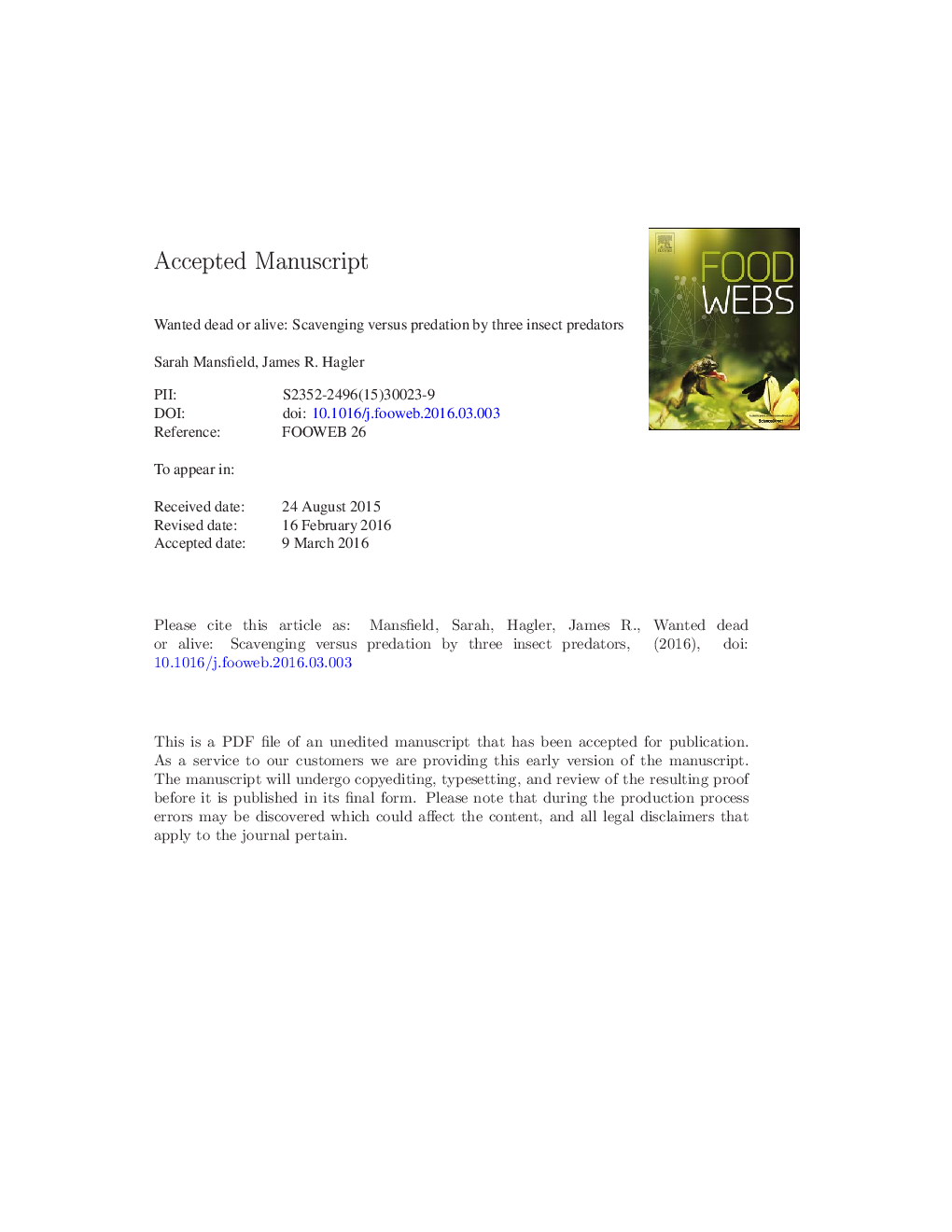| Article ID | Journal | Published Year | Pages | File Type |
|---|---|---|---|---|
| 5759848 | Food Webs | 2016 | 25 Pages |
Abstract
Many generalist insect predators engage in facultative scavenging. If an apparent predator frequently consumes dead prey instead of live prey then the biological control services provided by that predator may be overestimated. The use of unique protein markers on live and dead prey of the same species followed by gut content analysis of the predators is an effective method to distinguish between scavenging and predation events. The frequency of predation and scavenging on third instar Lygus hesperus (Hemiptera: Miridae) prey by Collops vittatus (Coleoptera: Melyridae), Hippodamia convergens (Coleoptera: Coccinellidae) and Chrysoperla carnea (Neuroptera: Chrysopidae) was measured using rabbit IgG and chicken IgG markers. Predators and rabbit IgG-marked dead (cadaver) and chicken IgG-marked live L. hesperus were placed on or adjacent to cotton plants enclosed in small cages for 6Â h. The plants were then searched for all predators and uneaten prey and examined for the presence of the two proteins by IgG-specific enzyme linked immunosorbent assays (ELISA). The gut analyses revealed that scavenging was more prevalent than predation and that all three predators were facultative scavengers. In addition, direct visual observations of the predators in the cages and the number of C. carnea that went missing during the study suggested that C. vittatus and/or H. convergens were engaging in intraguild predation on C. carnea. When combined with a standard caging procedure the immunomarking procedure used here proved useful for distinguishing scavenging from predation events, which is not possible when using conventional prey-specific ELISA and PCR assays.
Keywords
Related Topics
Life Sciences
Agricultural and Biological Sciences
Agricultural and Biological Sciences (General)
Authors
Sarah Mansfield, James R. Hagler,
